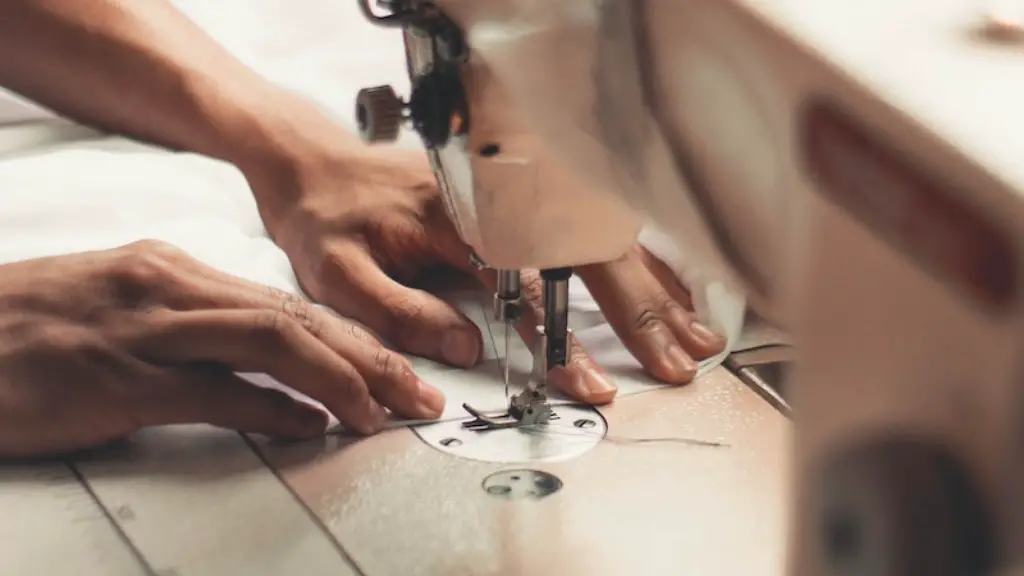Introduction
For many sewers, a Singer sewing machine proving difficult to maintain can be a source of immense frustration. Issues like skipped stitches, unthreaded needles, and detaching threads can be time consuming and expensive to repair and often require professional services. However, a problem that is particularly common among most Singer machines is the bobbin case. This can lead to an array of sewing machine issues such as improper or irregular stitching. Thankfully, fixing the bobbin case is an easy and straightforward process.
Identifying the Problem
The first step in the process of fixing the Singer sewing machine bobbin case problem is spotting the issue itself. The bobbin case is a small metal component located underneath the sewing machine. Depending on the model of the sewing machine, it will either have a hinged door or a removable case, which will have to be properly opened. The bobbin case is often prone to dirt and lint build-up and over-use, which can lead to the hook of the case being clogged or malfunctioning. In order to fix this issue, it is necessary to thoroughly clean the bobbin case gallery and hook.
Preparing the Bobbin Case
Removing the bobbin case from the sewing machine is a surprisingly easy process. All that is required is to turn the hand wheel towards you and make sure that the needle is at its highest point. Once this is done, the bobbin cover plate can be removed. Inside the plate, the bobbin case will be snugly placed. With slight pressure it can be easily removed and the bobbin case can be taken out. The thread and the bobbin should both be removed before the case is opened and the hook inspected.
Cleaning the Bobbin Case
After the bobbin is removed, it is necessary to clean the hook and the bobbin case gallery. To do this, use a can of compressed air, a soft brush, a damp cloth, and some cleaning solution. Start with the brush and air to blow away any dirt and lint from the hook and the gallery. Finally, use a damp cloth and precision oil to remove any dust or grime. Be sure to be relatively gentle when cleaning the hook as it is incredibly tender and requires extreme care.
Testing and Troubleshooting
Once the bobbin case has been cleaned, it is necessary to check and make sure that the issue is actually fixed. This can be done by either checking the bobbin case manually or threading the machine and then running a test stitch. Once this is done, it is good practice to check the tension of the bobbin thread as this can be a common cause of bobbin case related issues. If the tension of the thread needs to be adjusted, do so by using a tension tool.
Reassembling the Parts
After the bobbin case has been thoroughly cleaned and tested, the final step is to reassemble the components. The bobbin should be placed in the case in the same orientation as it was before. Once this is done, the bobbin should be placed into the machine and the bobbin case should be reattached in its place. After doing this, make sure that the bobbin is running freely. Lastly, to ensure that the thread has been secured properly, run a test stitch as explained previously.
Checking for Regular Maintenance
One of the most important aspects of troubleshooting and heating most Singer sewing machine issues is regular maintenance. This requires the machine to be serviced and cleaned every month or so and can prevent various issues from occurring in the future. Making sure that the bobbin case is clear of dirt and lint every few weeks is necessary to ensure proper operations.
Using Newer Models
Whether you want a Singer sewing machine or not, investing in a newer model can be a great solution to regular sewing machine issues. Newer models are often equipped with features like automatic thread-cutting and self-threading capabilities and can save a lot of time and effort. Furthermore, due to their modern designs, they are relatively easy to work with and use.
Buying High Quality Supplies
Buying high quality supplies and fixations for Singer machines is incredibly important. This can range from the machines themselves to accessories like bobbin cases and needles. Investing in these materials and components that are original and from an established seller is absolutely key to fixing and preventing recurring sewing machine issues.
Utilising Professional Services
Although many Singer sewing machine issues are relatively easy to fix, some are too complex and require the help of a professional. In such cases, local sewing machine repair shops and authorised Singer service centres can be invaluable in providing quick and efficient services. With highly experienced and qualified personnel, such services can provide the best results for various sewing machine issues.
Removing Unwanted Stress
More often than not, sewing machine issues can be incredibly stressful to deal with. In order to reduce this stress, it is important to prepare for these issues as much as possible. Literature on the details of Singer machines and access to minor replacement components can be incredibly helpful in tackling most problems.


